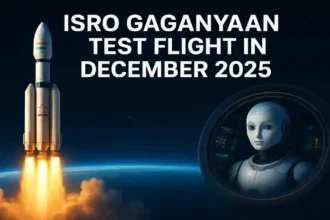
Cape Canaveral, Florida – In yet another stride toward global internet accessibility, SpaceX launched 28 Starlink satellites into low Earth orbit (LEO) on Tuesday, further solidifying its position as a leader in commercial spaceflight. The launch took place from Cape Cana viral Space Force Station using a Falcon 9 rocket, continuing SpaceX’s rapid deployment of its internet beaming satellite network.
The successful mission added to the growing Starlink constellation, which now includes over 6,700 active Starlink satellites circling the Earth. This latest batch is part of SpaceX’s ambitious plan to provide high speed, low latency internet across the globe, especially targeting underserved and remote regions.
Falcon 9 Booster Makes Record Breaking 26th Flight
A notable highlight of this mission was the reuse of a Falcon 9 first stage booster that completed its 26th successful flight, making it one of the most flown boosters in SpaceX history. After completing its primary mission, the booster made a flawless landing on the droneship “A Shortfall of Gravitas” stationed in the Atlantic Ocean.
This achievement further underlines SpaceX’s commitment to rocket reusability, drastically reducing the cost of access to space. The ability to recover and reuse Falcon 9 boosters is central to SpaceX’s broader strategy for cost effective satellite launches, including its massive rollout of Starlink satellites.
Starlink Constellation Now Surpasses 6,700 Satellites
With this latest deployment, the total number of Starlink satellites in low Earth orbit has surpassed 6,700, marking a significant milestone in the development of one of the largest commercial satellite constellations ever built. The Starlink project, which began in 2019, aims to eventually operate up to 12,000 satellites under current licenses, with additional filings proposing up to 42,000 in the future.
The deployment of Starlink satellites is part of a broader plan to provide global internet coverage, particularly for users in rural and hard to reach areas where traditional broadband services are limited or nonexistent. The Starlink satellites create a mesh network around the planet, enabling high speed connections with reduced latency compared to older satellite internet systems.
Internet for the Underserved
The Starlink internet service is already operational in over 70 countries, with millions of users worldwide. Starlink’s key value proposition lies in its ability to deliver internet access to remote and isolated locations, such as rural homes, disaster hit zones, maritime vessels, and even planes.
By launching more Starlink satellites, SpaceX is ensuring increased coverage, improved reliability, and faster data speeds. The service has also gained popularity among mobile and off grid communities, emergency services, and defense sectors due to its portability and robustness.
Technical Advances and Future Launches
Each new batch of Starlink satellites brings technological improvements. The latest generation, known as Starlink V2 Mini, includes advanced phased array antennas, better thermal management, and improved bandwidth capabilities. SpaceX is also preparing to launch Starlink V2 full sized units using the Starship rocket, which is currently under development and testing.
With multiple launches planned monthly, SpaceX is on track to rapidly scale its Starlink network to support higher capacity and better coverage across continents. The company has already been granted regulatory approval for direct to cell connectivity, which will allow standard mobile phones to connect directly with Starlink satellites, offering another revolutionary step in global communications.
Starlink’s Growing Market Impact
As of mid 2025, the Starlink satellite network has become a pivotal player in the satellite internet industry. Competitors like Amazon’s Project Kuiper, OneWeb, and China’s Guowang constellation are racing to build their own networks, but Starlink satellites currently lead in both scale and reach.
This dominance has helped SpaceX secure several government contracts, aviation partnerships, and military collaborations. From the war zones in Ukraine to the icy terrains of Alaska, Starlink satellites have demonstrated versatility and reliability unmatched by conventional internet providers.
Stay Connected with The News Drill for more updates. Stay informed. Stay updated. Stay Ahead.
Contact us: contact@thenewsdrill.com
Submit a story or tip: editor@thenewsdrill.com













